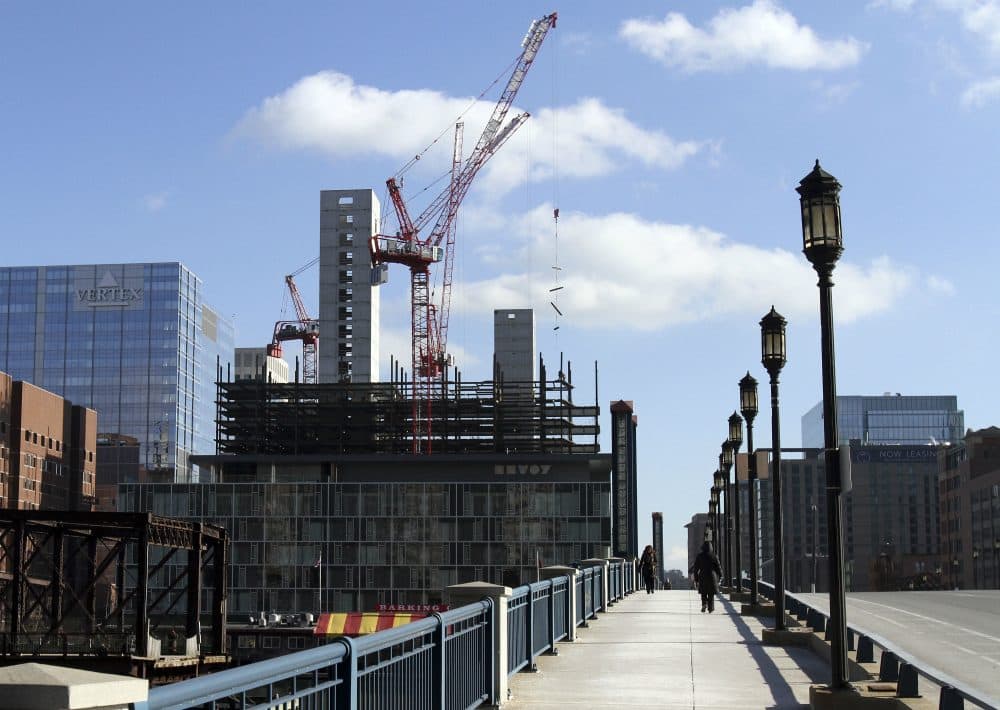Advertisement
commentary
Who Owns Boston's Waterfront? The Case For Protecting A Priceless Public Realm

Imagine a Boston city agency doling out pieces of Boston Common land to favored developers, arguing to the public that carving up the public realm is needed to spur new construction. Imagine learning that the city asked only for a pittance from the lucky developers in return. And imagine the political firestorm if a state agency rubber-stamped the city’s breach of the public trust.
This is precisely what is happening on Boston’s waterfront.
In a recent approval for a project at 150 Seaport Blvd. in the Seaport area of South Boston, the city simply redrew its waterfront plan to accommodate the desires of one particular developer. The public realm is cut in half, the height allowed is five times that normally allowed, and other critical corners are cut, including a host of exemptions from tidelands regulations that require developers to provide, among other things, water-based access and pedestrian amenities to the public. In return, the city gets only an “in-kind” donation of construction work, valued (in the self-serving estimate of the developer) at $1.5 million, and some lobby enhancements. A sweetheart deal if ever there was one.
This is an outrage, and the public should be aware of it. In Boston and throughout the commonwealth, tidelands have been protected as a public commons for centuries.
This is an outrage, and the public should be aware of it. In Boston and throughout the commonwealth, tidelands have been protected as a public commons for centuries.
As with the Boston Common, the understanding of what serves the public interest on the waterfront has changed over time. The Common’s earliest uses as a public realm were for animal grazing and religious gatherings. Eventually, it became the protected realm of trees, ponds and green lawns alive with public use from office workers on a quiet lunch break to boisterous celebrations and demonstrations.
The commons created by our tidelands law has similarly evolved. The public uses originally protected only maritime and water-dependent activities like shipping and fishing. As the city’s needs changed, waterfront regulation expanded to accommodate the pressure to build offices and residential buildings near the water, particularly after the public paid to clean up the harbor.
Regulations were established more than a century ago to ensure that this private development did not come at the expense of the public commons. The core principle that the tidelands are a public trust and that private interests must be subordinate to the public interest, however, remained. So, when private, non-water-dependent development is allowed on tidelands, the license afforded to private developers is a limited one, and the law requires with narrow exception that at least 50 percent of the footprint be devoted to the public realm.
Developers playing by these rules have helped enliven the waterfront and have allowed the public to enjoy a transformed Boston Harbor. Thanks to a hard-fought lawsuit and billions in public money, a harbor once used as an open sewer has become a tourist and recreational mecca and the driver of billions of dollars in new construction. For the public, access to this revitalized waterfront is their due as taxpayers as well as their entitlement under the law.
Now that we have scientific certainty that rising sea level and more intense rains and storms put Boston's waterfront and over one-third of its downtown infrastructure at risk, public purposes must broaden. The need to protect the public realm and integrate climate resilience into our understanding of the public trust is more compelling than ever.
For the public, access to this revitalized waterfront is their due as taxpayers as well as their entitlement under the law.
In designing its new headquarters, GE took all of these lessons into account, devoting 50 percent of the footprint of its site to the public realm, thoughtfully designing its structures for climate conditions anticipated over the next 50 years, and asking only for a 42-year license for its site. Although GE was certainly granted significant and valuable tax incentives and other inducements to relocate its headquarters to Boston, wholesale exemption from the public trust requirements associated with the property was not among them.
But the city’s redevelopment agency is continuing an old city practice of letting some favored developers take from the public realm to enrich themselves, which is unfair both to the public and to companies like GE that play by the rules. If the 150 Seaport project approval, now rubber-stamped by the Baker administration with only cosmetic changes, goes forward, it will leave the public realm at the mercy of developer greed and the political winds buffeting the mayor’s office.
The city needs to stop its giveaway of our waterfront commons and prioritize public space over private greed. This public commons should be as zealously protected from the predations of developers and elected officials as Boston Common has been.
